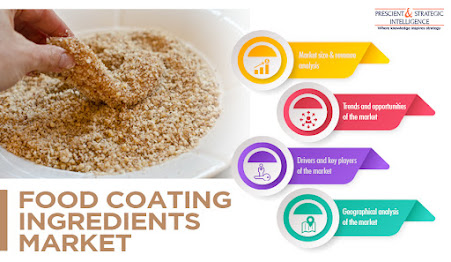The mushrooming consumption of convenience foods is one of the major factors driving the demand for food coating ingredients. Due to the rising urbanization rate and busy lifestyles of people, the demand for ready-to-eat and convenience foods, such as nutrient bars, bakery and confectionary products, savory snacks, and cereals is rising. As food coatings are extensively used in these foods for mitigating the contact of the food item with the environment, the rising demand for convenience and ready-to-eat foods is fueling their sales across the world.
In addition, the rising requirement for food protection agents is also propelling the worldwide demand for food coating ingredients. Poultry products and meat usually need food coatings in order to prevent adhesion, disintegration, or agglomeration. Moreover, coatings are also required in vegetables and fruits for mitigating the loss of moisture in them. Owing to these factors, these coatings are being increasingly used in large amounts in food items all over the world, thereby causing the expansion of the global food coating ingredients market.
Geographically, the sales of food coating ingredients are predicted to rise at the fastest pace in the Asia-Pacific (APAC) region over the next few years. This is ascribed to the soaring requirement for processed food items, mushrooming population, and the surging disposable income and changing lifestyles of people in the region. The food coating ingredients market is expected to exhibit rapid expansion in the emerging economies of APAC, such as Australia, China, and India, in the coming years.
Hence, it can be safely said that the sales of food coating ingredients will rise sharply in the coming years, mainly because of the growing consumption of ready-to-eat and convenience foods, on account of the increasing disposable income of people and their busy lifestyles and the ballooning requirement for food protection agents across the world.

No comments:
Post a Comment